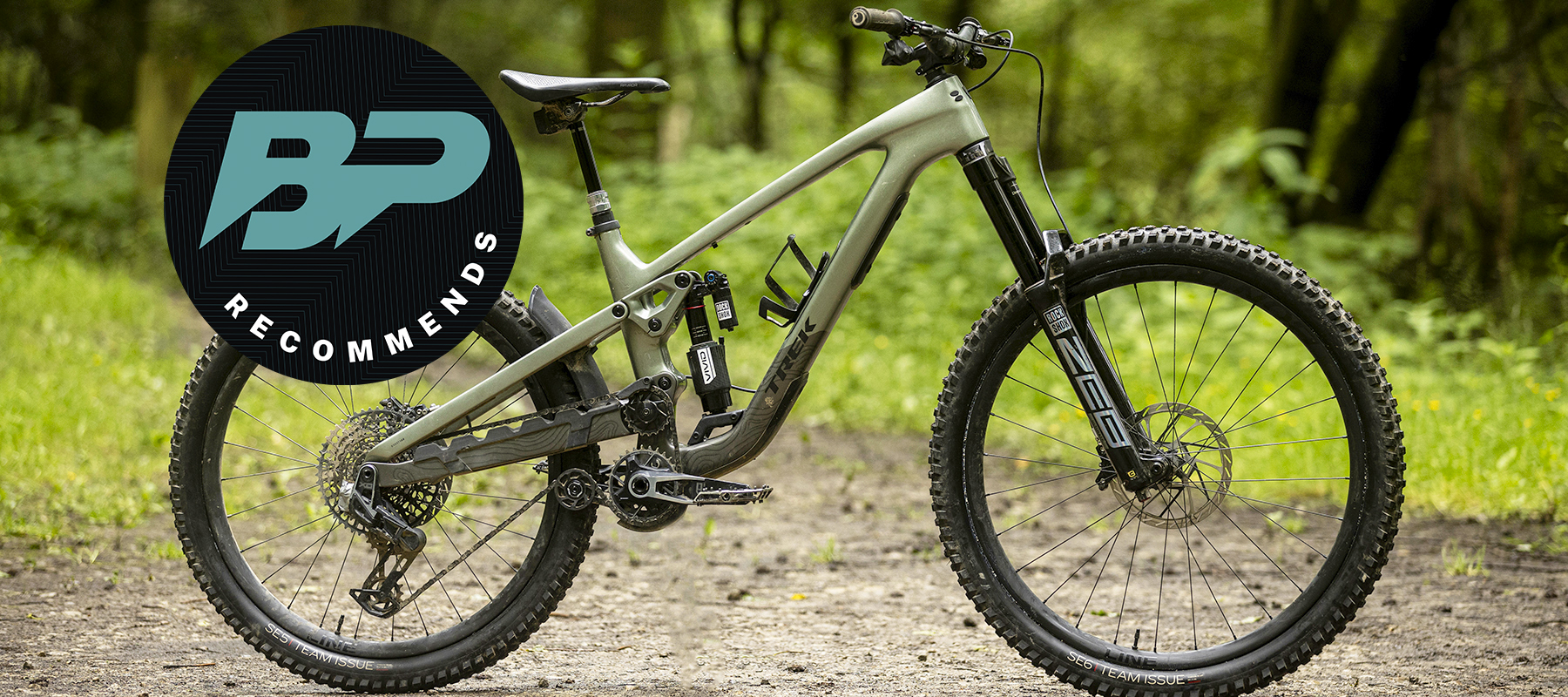Bike Perfect Verdict
Contrary to what you might expect, Trek’s headline shift to a more rearward axle path and more DH-focused suspension doesn’t mean its latest Slash can’t cut it as a well-rounded and efficient enduro rig. I found it engaging and tons of fun when working as intended, but did have some serious issues connected to the added complexity in the drivetrain layout.
Pros
- +
Smooth, calm and balanced ride
- +
Whether pedaling or pushing into the suspension for extra terrain speed, the Slash offers great support
- +
Big idler and guide wheels pedal really smoothly
- +
Nimble and maneuverable
- +
Great chassis feel and tidy finish and details with plenty of adjustability
- +
Very quiet and well protected
Cons
- -
High RRP
- -
Drivetrain complexity introduces some potential issues
- -
Own brand Bontrager wheels and tires wouldn’t be my choice
- -
Doesn’t roll as fast as some 29-er enduro bikes
- -
Reverb dropper won’t be long enough for taller riders
- -
No classic, completely bump-erasing, glued-to-the-floor feel of a high pivot
Why trust BikePerfect
With its high pivot suspension and idler setup, Trek’s latest multi-adjustable Slash looks a lot like a Session DH bike, and is also about as on-trend for a 2024 mountain bike as you could imagine (except maybe if it was electric too).
As well as bringing the latest tech from downhill racing, the Slash 9.9 X0 AXS T-Type Gen 6 ups travel closer to DH levels with 170mm at both ends, compared to the 160mm rear on the older version. The all-new Slash frame also has slightly slacker geometry, although the angles are pretty standard ‘enduro bike territory’ and not that radical for a bike that looks this radical.
With its rowdier attitude, huge idler wheels and a lot of chain going on in the middle of the bike, the latest Slash definitely looks funky and it’s easy to imagine it working best for a downhiller or lapsed freerider who only needs/wants one bike in their arsenal able to access the steep stuff under their own steam. Once I rode this new Trek though, I quickly realized any assumptions of one-dimensional, DH-focused, performance weren’t actually that accurate.
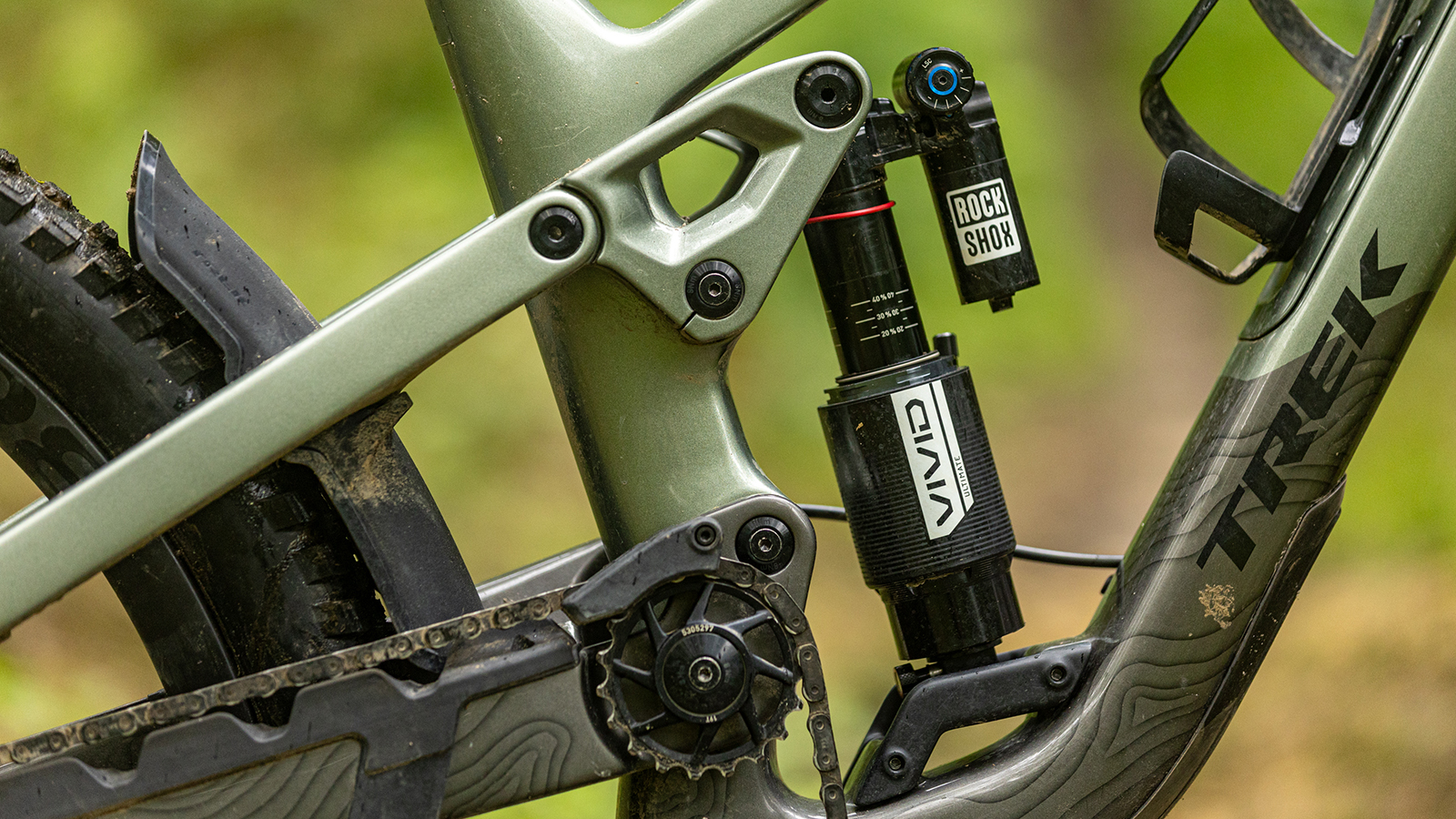
We’re now up to the sixth Slash generation, so plenty of familiar and proven technologies remain like Trek’s OCLV carbon construction and an ABP rear pivot. The frame offers tons of adjustment, including the ability to switch to 29in wheels like the older Slash rather than run the stock MX setup. The mullet wheels here use proprietary Bontrager carbon rims and tires.
Trek pairs RockShox’s new Vivid Air shock and its several inches higher main pivot with a 170mm RockShox Ultimate Zeb fork up front. On this 9.9 model, the chassis is full carbon everywhere with downtube storage and fully tricked out with SRAM electronics, including a T-Type Transmission with Pod shifters and an electric Reverb AXS dropper.
Despite its headline downhill orientation, the new Slash is still designed for efficient pedaling and climbing and Trek has clearly done a ton of work on the suspension configuration to balance pedaling and descending qualities that I’ll delve into later. The all-new Slash is available in various models, from this high-end carbon fiber version that’s nearly ten grand to more affordable aluminum frames starting just over $4,000 / £4,000. And, because of the added complexity and weight in this new layout, Trek also continues to offer the Gen 5 Slash as a lighter and simpler alternative.
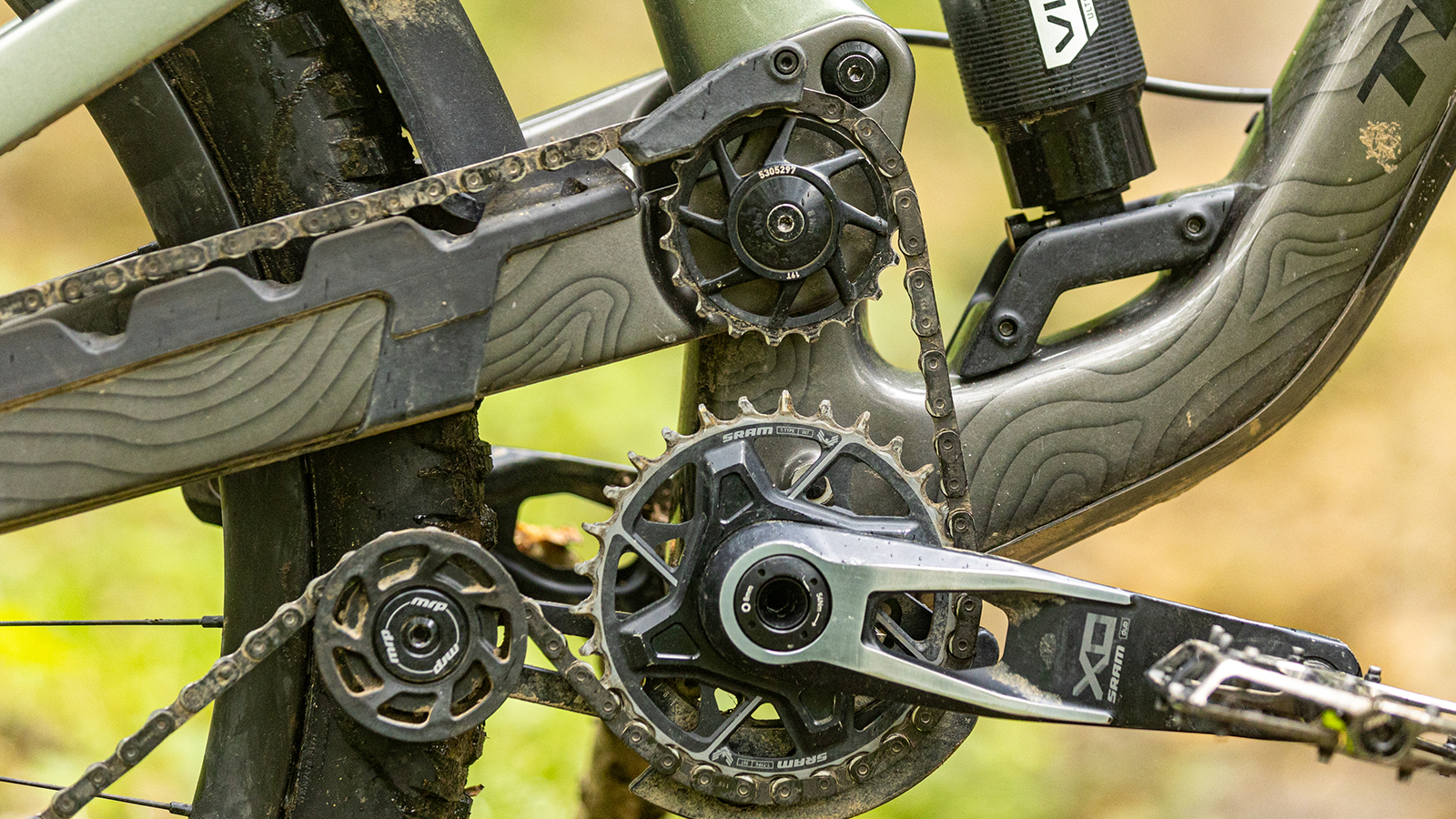
Design and geometry
Trek’s Slash has consistently evolved year-on-year, but one trademark has always been offering a smooth ride and excellent tracking under braking. Seeing as this is often touted as a major reason engineers choose to adopt a high pivot suspension design, you might question its motives, but with its improved rear axle path and superior bump swallowing, the design has become the one many brands are adopting in the gravity sector for ultimate suspension performance.
The high pivot here brings the advertised benefits of the wheel moving backwards in the direction of bump forces to enhance momentum and stability in rough terrain and is part of a system using Trek’s ABP (Active Braking Pivot). That final piece allows the chassis to rotate a touch around the rear rotor under braking, so it doesn’t lock up the suspension and the new setup here bolts SRAM’s T-Type rear mech into the frame together with the Boost rear axle. The way it is integrated is all pretty slick (just like the rest of the frame’s finish) and at the back of a hugely protected chainstay, the ABP pivot tightens up around the axle with a cassette tool if you need to service it, which is a pretty neat touch.
The main reason for moving the main pivot higher is for a more rearward axle path, but a drawback of this is impacting the suspension in other ways; most notably increasing the distance between rear axle and front chain ring as the suspension moves. This increases chain growth, which ups pedal kickback (a force pulling the cranks backwards deeper in the travel) and can feed back to the rider as harshness in the leading leg and inhibit free suspension movement. Trek’s (bigger 19t) upper pulley wheel is all about negating this effect and retaining the benefits of a high main pivot. By routing the chain around an idler pulley and controlling the distance between the axle and the high main pivot, the brand can better control any pedal kickback.
And, yes, all this adds all the drivetrain complexity you can see when combined with an extra lower guide for chain stability. But while Trek’s previous Slash saw anti-squat dip to 20 percent by the end of the bike’s travel, its engineers have delivered 100 percent anti-squat throughout the travel on this Gen 6 model using the new complicated suspension layout. Consistent anti-squat throughout the travel means the Slash should pedal efficiently without bobbing anywhere while climbing or sprinting and (equally importantly) have a consistent and predictable feel in terms of support and speed generation in compressions and berms.
Combining this aspect of tuning with the rear ABP pivot that helps control anti-rise by partially rotating as the bike reacts to braking forces on the suspension (and how much it wants to extend up under braking), gives Trek’s boffins a potent recipe for tweaking suspension performance under pedaling, braking and bodyweight inputs.
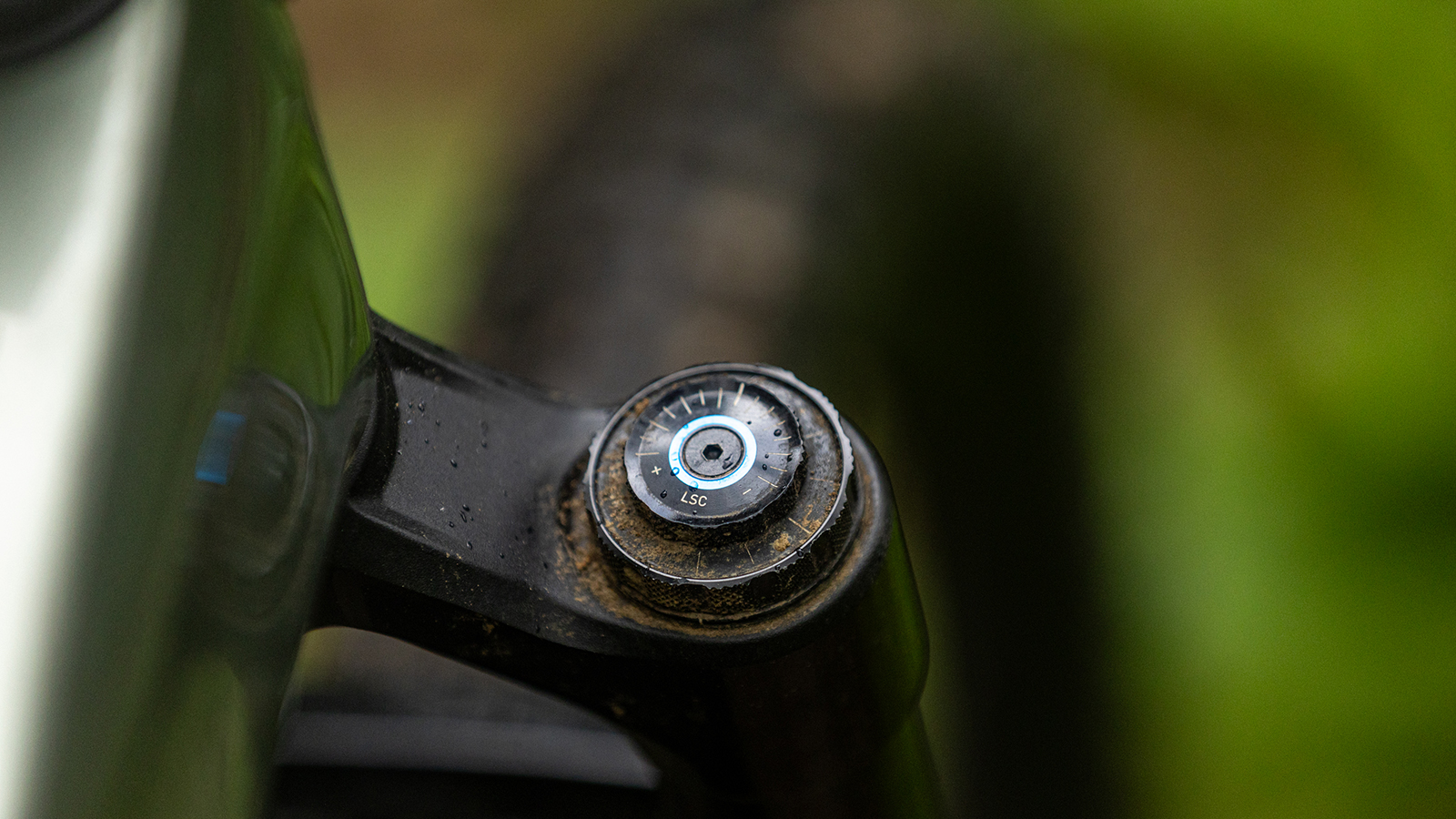
In terms of construction, this 9.9 level frame is carbon throughout with a shock rocker that’s part magnesium, and uses Trek's OCLV carbon technology, which improves strength and impact resistance by better compressing carbon layers and purging fillers.
Trek keeps the old(er) school stuff where it makes sense, including the 73mm BSA threaded bottom bracket and internal cable routing that avoids annoyingly going inside your headset bearings like plenty bigger brands are doing. The Slash cable routing minimizes tube rattle to the point it’s non-existent and also maximizes internal frame space inside Trek’s downtube stash.
Alongside the very chunky sculpted chainstay guard, there’s a metal plate on the interior of stays where the chain can potentially slap and rub against the carbon and even an impact-resistant laminate under the paint for extra durability everywhere. Slash stays can handle fatter rubber (up to 2.6in), offer good mud clearance and a mud guard, and there’s more frame protection behind the BB and under the downtube where removable plastic guards defend against rock strikes and shuttle damage.
Gen 6 Slash comes with a 170mm fork that gives a slightly slacker 63.3-degree head angle, but it’s also rated for up to 190mm fork if you want to go full ham on the downhills or hucks. You can adjust the head angle without changing fork stroke too with Trek’s aftermarket adjustable headset cups or fiddle with the lower shock mount and flip the leverage rate between less or more progressive. Riding with less ramp up (like I did) offers a plusher feel and a smoother and more supportive mid-stroke, and flipping it makes it more progressive for when you’re riding fast, hitting big features and want extra bottom out resistance (or are running a more linear coil shock).
I found the 77-degree seat angle pretty much spot on for climbing without being too steep to pedal longer distances or feel cramped in the cockpit, and across a broad range of sizes, Slash chainstays grow in length from just under 430mm on the M to almost 440mm on the XL. The M/L I tested had just under 470mm reach and foot-to-hand distances range from 448mm to a rangy 513mm on the biggest frame; all with a 351mm static BB height sounds reasonably tall, but doesn’t feel at all high when you’re actually riding.
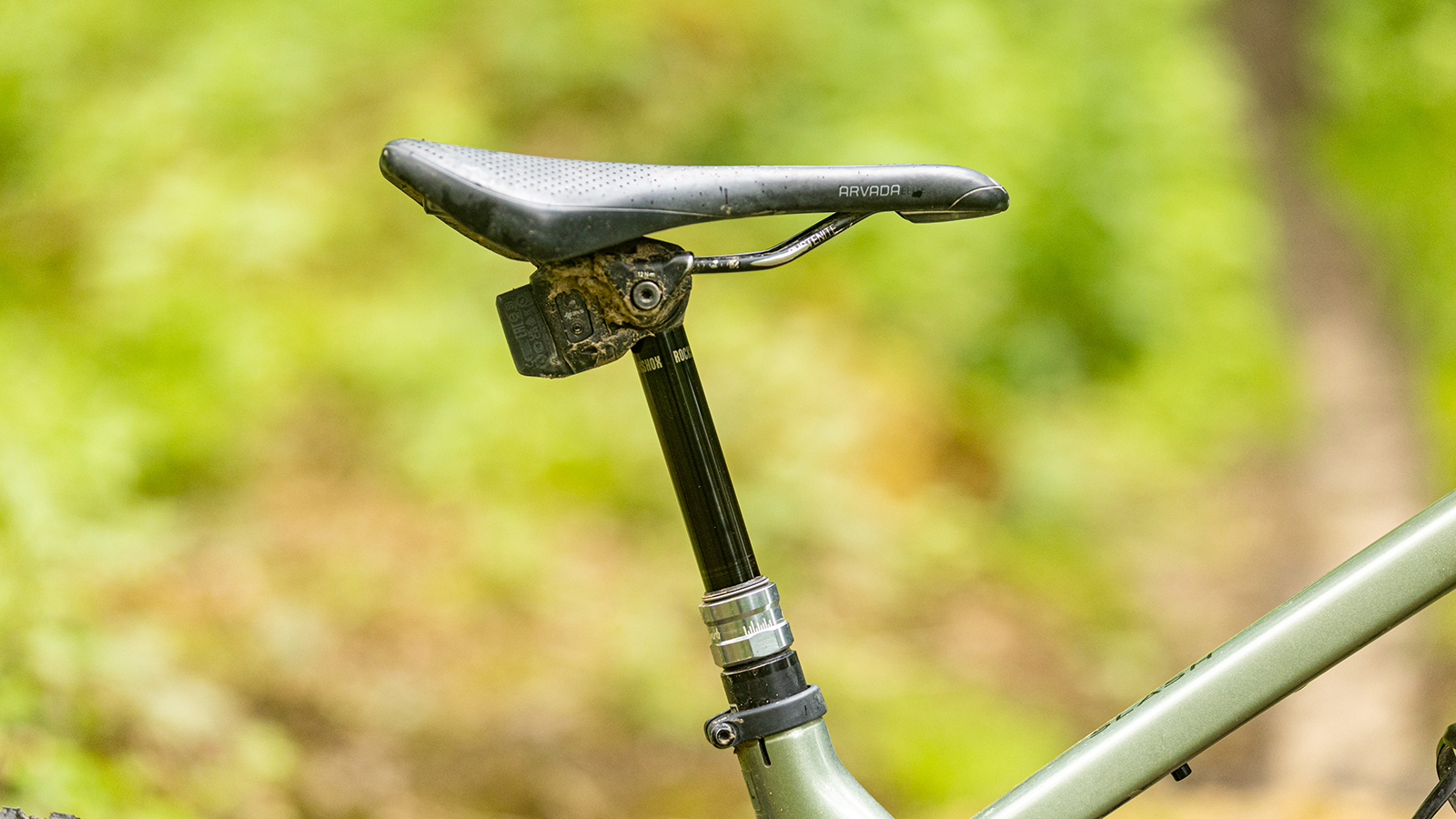
Components and build
This Slash 9.9 model costs nearly ten grand, so it’s a shame that quite a few parts here had Bontrager written on the side. I didn’t like the grips’ uncomfortable lock rings, but that’s no big deal, unlike the sketchy SE5 and SE6 tires that really affect performance. Despite a decent tread pattern, the 2.5-inch pair use a finer weave 120tpi casing that lacks damping and protection and makes them too flimsy and thin for serious downhill riding. To top this off, the rubber compound feels perilously slick on wet rocks and roots too.
During testing, I replaced them with Michelin tires, which offered way better grip and stability, and from what I can see, even Trek’s top enduro racers, like Hattie Harnden, do the same and opt for Continental tires with logos blacked out for World Cup events. Swapping tires is a bit of a must to match the Slash’s DH capability and you’ll need to factor in another $100 / £100 or so for this.
The Bontrager Line Pro 30 carbon wheels are also not to my taste. They proved really strong, constantly hammered into rock slabs on full-on DH tracks and provide a razor-sharp, quick-to-accelerate feel, but this also makes the ride edgy and harsh and lacking in the compliance and tracking many modern carbon rims now offer. I tried to mitigate this effect by reducing spoke tension half a turn, which improved comfort slightly, but one nipple on the rear wheel fully unwound and I had to take Bontrager’s clever, tubeless tape-avoiding, rubberized rim strip off to reseat it.
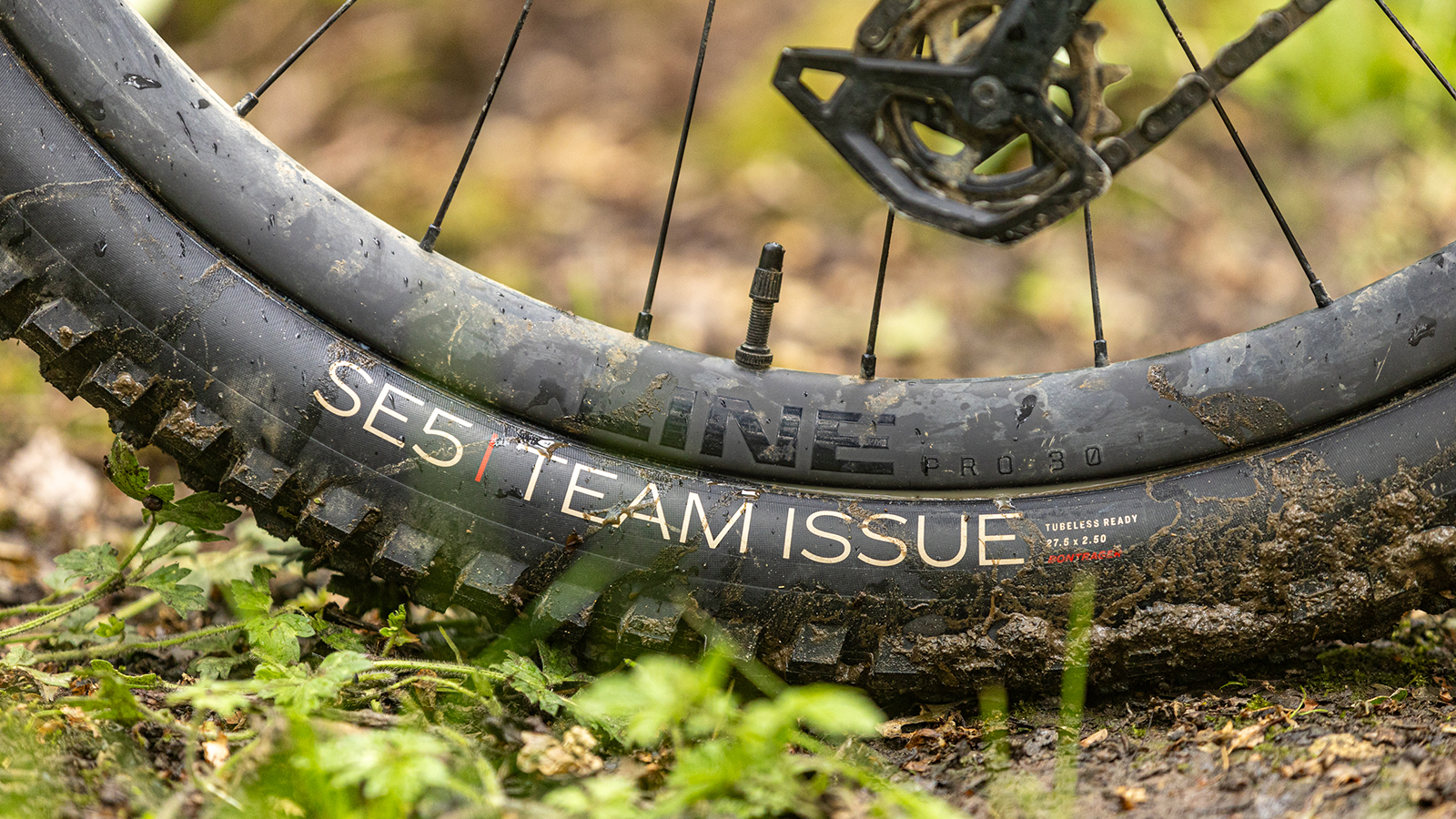
Trek’s one-piece carbon bar/stem combo looks slick and is lightweight, but it has its downsides too. You can’t adjust stem length or bar shape if the shape and fit don’t suit, but I can’t comment on ride feel as a previous tester had cut it too narrow for me to try. RockShox’s Reverb AXS dropper post maxes out at 170mm travel, which worked well enough for me and (even though it requires charging another AXS battery) the lightness of operation makes it one of my favored droppers, but the tallest riders might want more drop.
On a more positive note, SRAM’s Code SLR 4-piston brakes with 200mm rotors deliver consistent stopping power and the latest T-Type transmission with a 10-52t cassette is rock solid. Even with all the complications, Trek’s drivetrain is surprisingly smooth and delivers seamless shifts using SRAM’s new adjustable Pod shifters, which greatly improved thumb positioning over older designs. I got so used to the Pods in fact that mechanical shifting felt weird and archaic switching back to it, which is the first time that’s happened since electric gears came out.
SRAM’s 165mm XO1 cranks are stiff and solid and provide extra ground clearance too, but I did have a major issue with the AXS XO1 T-Type rear mech. While it withstood impacts and rock strikes like a champ, the AXS battery was knocked off while riding and completely lost in the forest. Fortunately, I had a spare with me in Italy, but this could be a major problem during your race or ride holiday. The battery’s placement hanging off the back secured by a small plastic tab is a bit of a design flaw SRAM seems to be aware too, as the newer GX Eagle T-Type mech has the battery relocated on top for better security.
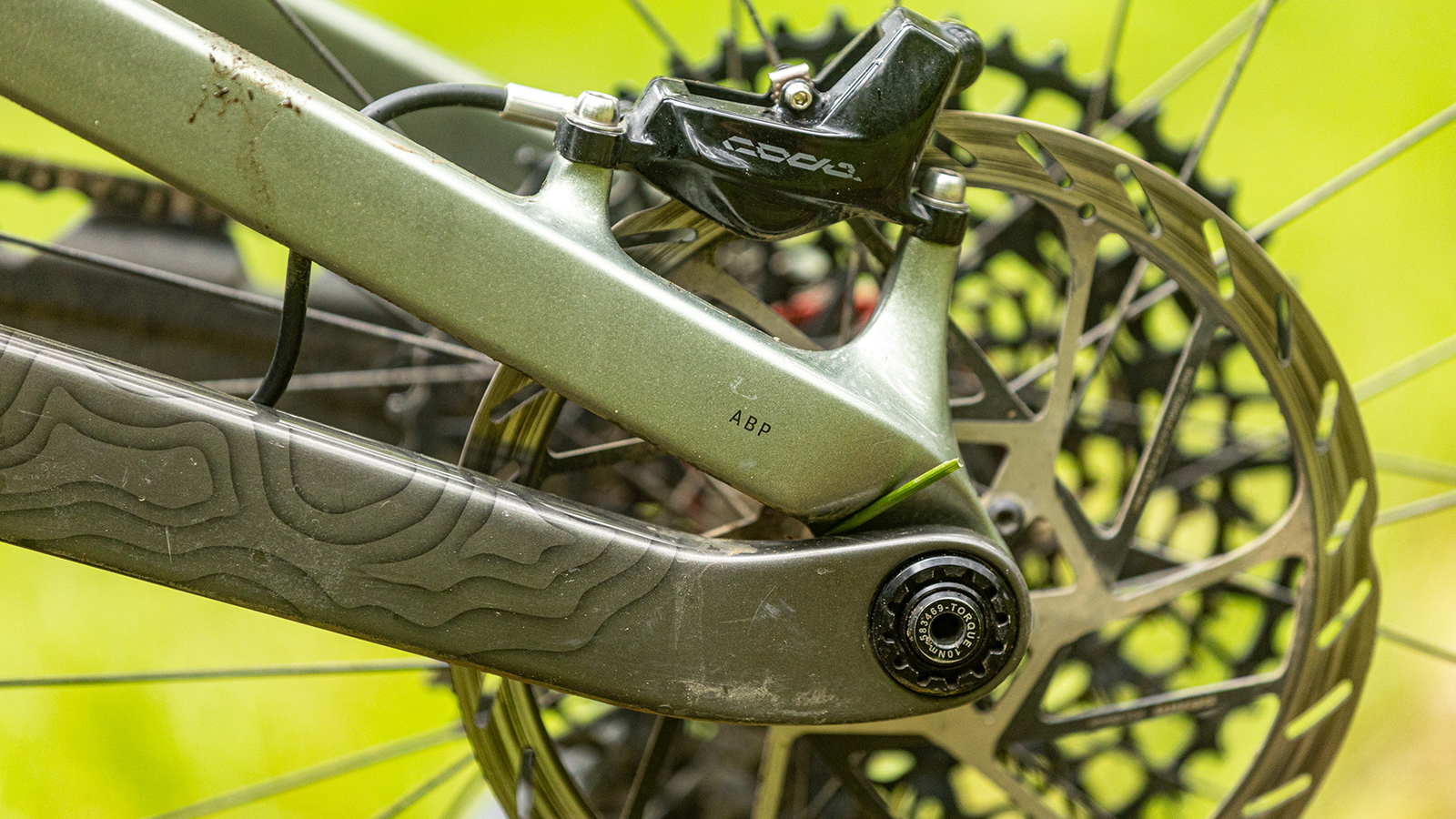
Ride, handling and performance
Forget any ideas of excessive drivetrain drag and a soft feel under power; this new Slash pedals and climbs pretty well by any standards, not just compared to other long travel enduro bikes. Even with the complex design, it’s not that heavy for the category either and smooth and zippy while supporting rider weight evenly whether spinning or stomping.
The seated climbing position is comfy and well-balanced to keep you centered, and the way the back tire maintains traction on steep climbs without wheel-spinning is properly impressive – that rearward axle path is clearly doing something extra and rubbing out small hook ups so the rear tire bites and drives on slippery or loose surfaces stood up or sat down.
Even threading the complicated sequence of 19t upper idler, X-Sync chainring, lower guide and that massive T-Type mech and cassette, the chain is quiet and smooth rolling when properly lined up and the suspension never really wallows or bobs on the downstroke either. I read elsewhere some owners have issues with rumbling, but this bike stayed really quiet for me.
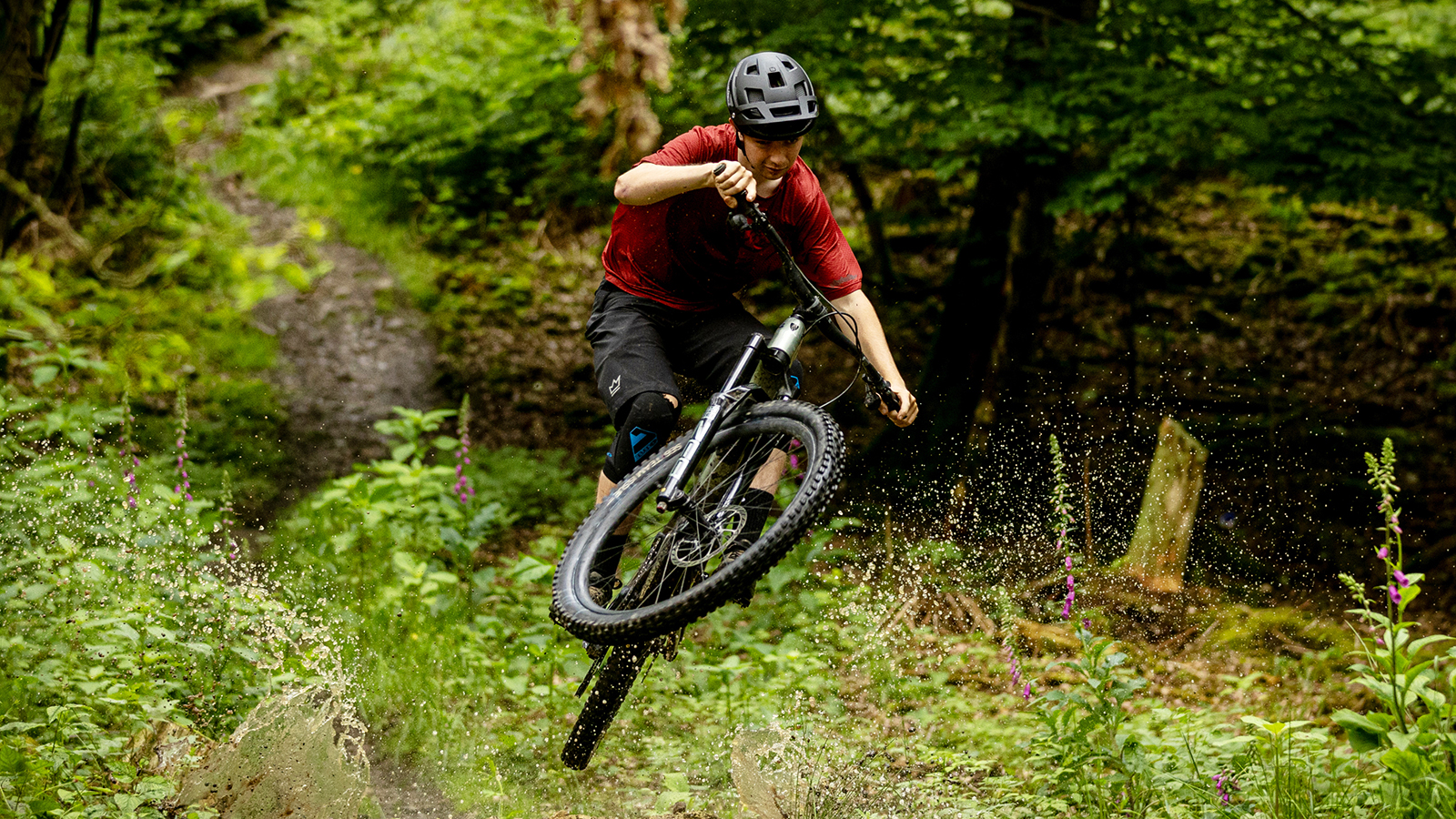
I’m not the biggest fan of climbing and very sensitive to anything slowing me down, but while this clearly isn’t a downcountry bike, it also avoids too much wasted energy, even sprinting along the flat or sneaking cranks in coming up to a big jump or something where some long travel bikes can really bog you down. Wherever you are in the travel, there is a real smoothness to the pedaling too, which backs up Trek’s claims of the near constant 100 percent anti-squat making it pedal more like its 120mm travel Top Fuel.
At this point I could go off on a real tangent and spout my half-baked theory that for flat pedal riders like me, bikes with more consistent (or lower) anti-squat numbers generally pedal more smoothly and with less of a surge/dip cycle that can feel choppy and introduce more bob. Flat pedal riders put more emphasis on the downstroke relative to clipped in riders who spin smoother circles, and I wonder if it’s something bike tuners and engineers (who as experienced or ‘expert’ riders are more likely to be clipped in) take into account, considering how many potential customers ride flats. This theory is definitely something for another day though, and maybe Trek’s engineers agree with me seeing as the new Slash pedals very neutrally anyway.
Trek claims the idler setup does add a small percentage of drag, but I reckon the T-Type drivetrain helps cancel some of this effect too by being super smooth, stiff and perfectly aligned on any bike. I can’t comment on whether the efficiency would be as good on a Slash with lower-tier kit. Despite the sharpness in power delivery, this is still a 170mm bike though, so I found the active rear end benefits from flipping the Vivid Air into the locked position for longer climbs on tarmac or smooth gravel fire roads where super-active suspension isn’t needed.
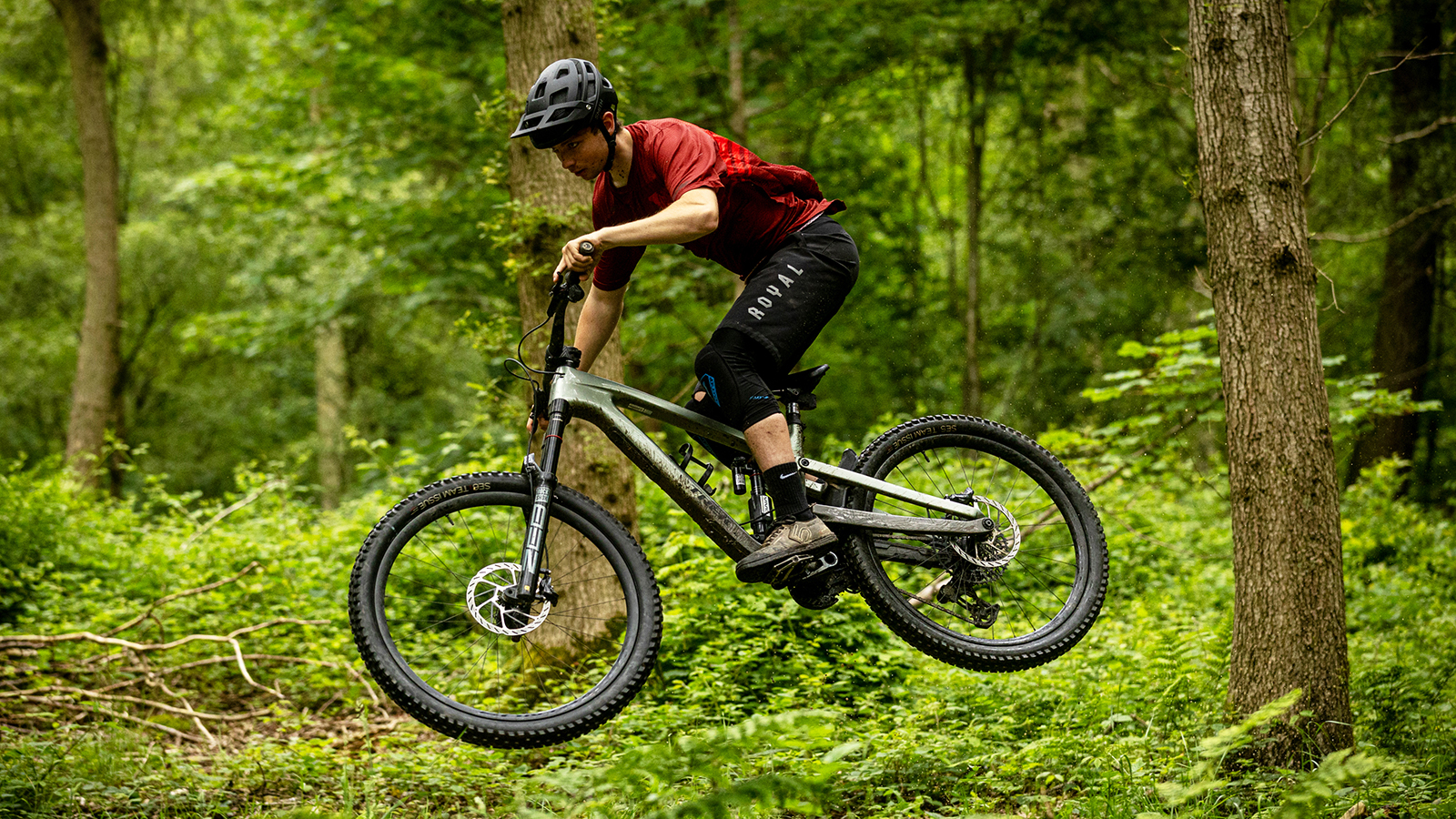
On the downhill and steep tracks where the Slash is most optimized, the suspension design kind of mirrors the pedaling performance. It somehow doesn’t scream ‘high-pivot suspension’ and overly glued to the floor, instead the main sensation is smoothness and control.
The Vivid shock (or back end) feels fantastic absorbing impacts without ever hooking up, while still supporting rider weight and not feeling bogged down and mushy in the midstroke. This perkiness and on-its-toes feel isn’t ever at the expense of bump swallowing either and the rear suspension is also highly active with excellent ground tracking and the ability to keep working even under hard braking.
Calm and collected it might be, but the Slash’s handling still lives up to its name by being plenty reactive, making it easy to dart about on technical terrain and execute cutties or Scandi flicks as happily as just smash it down the middle line and rely on the rear travel. It’s pretty easy to manual and pays back when you pump for speed. There’s a great sense of balance between the Vivid and the Zeb too, so you’re never getting pitched about on the steeps or feel like rider weight’s falling off the back. RockShox’s DH air shock is so good, it genuinely feels like a coil spring on ripple hits or sharp edges in terms of muting trail feedback brilliantly, plus it’s obvious what all the adjustments are doing so you can tune it to taste really easily without ever messing up the overall balance or performance too much.
Part of the Vivid’s gentle touch is due to the clever Touchdown design inside, which bypasses any compression damping for the first 10 percent of travel for extra sensitivity off the top and ground connection. Deeper in the travel, the Slash’s rear end controls and dampens impacts with smoothly building support, while feeding back plenty of trail information, so it never feels too dead or limp.
In terms of handling, the Slash is very neutral but can also react quickly to body weight shifts and little lifts and lofts out of turns or off-trail features. The M/L I tested is slightly shorter than many enduro bikes I review, but with the extra travel and high pivot that sees chainstays grow marginally in the travel, it feels as stable as a larger bike somehow, and I enjoyed the tighter dimensions and slightly more nimble handling. My guess is that the 490mm reach size Large might feel pretty big compared to other Large sized enduro bikes.
Trek’s Slash factor extends to jumps too, where the bike carves up and pops off lips without feeling soggy, even when set up for a very supple, ground-tracing feel at the shock. One of the best traits of the Slash everywhere is offering loads of smooth support at the back and how it maintains stability and avoids any sensation of the front end feeling a bit light mid turn and rider weight falling off the back a bit, which is something I’ve had before on some MX high pivot bikes.
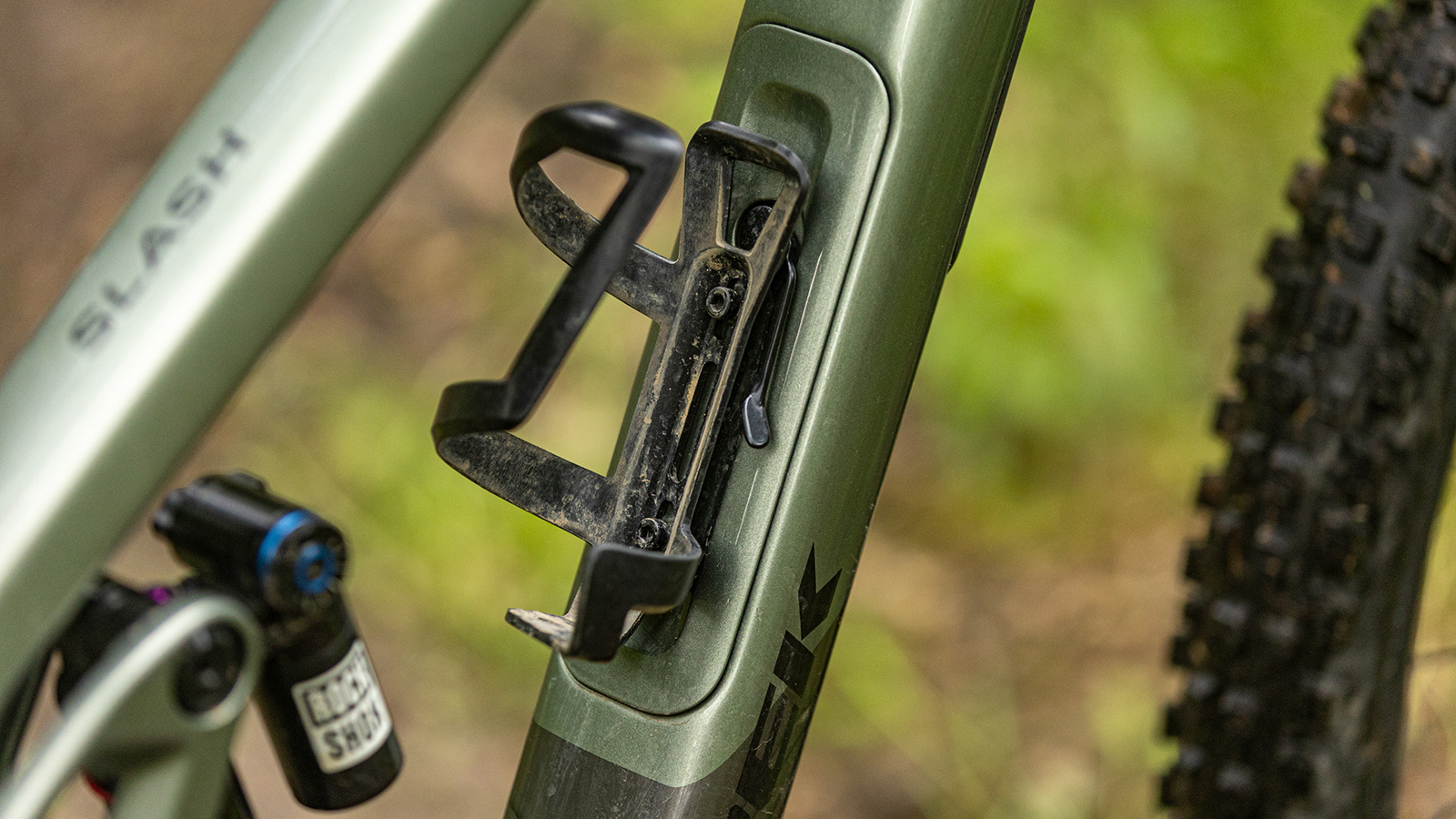
The Slash’s carbon frame has a new storage cupboard door that’s easier to open and the inside is bigger; the chassis feels solid and stiff too and able to hold straight in hectic lines without harshness or unexpected flexing. There’s also the adjustability for riders to tweak the setup for different riding styles and conditions, but I pretty much liked the Slash out of the box and didn’t even bother messing around with it.
While there are loads of positives to shout about with the Slash’s ride quality, it’s not without some major issues elsewhere. I had some major problems with chain security and the durability of the idler and lower guide setup and I also didn’t like the overly stiff own-brand carbon wheels and puny tire combo that feels too edgy on a bike where you’re likely to be pushing the limits of traction in some gnarly terrain.
I’m aware all the best mechanical stories start with, ‘I was just riding along’, but doing just that on a loose, rocky trail, either a rock punched the lower MRP guide bouncing up off the front tire or got sucked into it by the rear one and bent it inwards at 90 degrees and wrote it off and the jockey wheel. This same issue happened to a friend on an aluminum Slash too, which suggests the lower guide could benefit from better protection or a thicker aluminum plate to prevent bending.
And this is exactly what you get on the aftermarket MRP replacement Trek sent me, so giving Trek the benefit of the doubt, it may use thinner material to avoid frame damage, but more likely does it to save cash, which is a bit rubbish on a bike this much cash. Setting up the lower idler correctly requires a gap of 10-24mm from the chainstay to the top of the lower roller, with clockwise rotation increasing chain wrap on the chainring and improving chain retention. It worked fine for me once the replacement guide arrived, but I had several weeks of struggling to get this alignment right once the guide got bent.
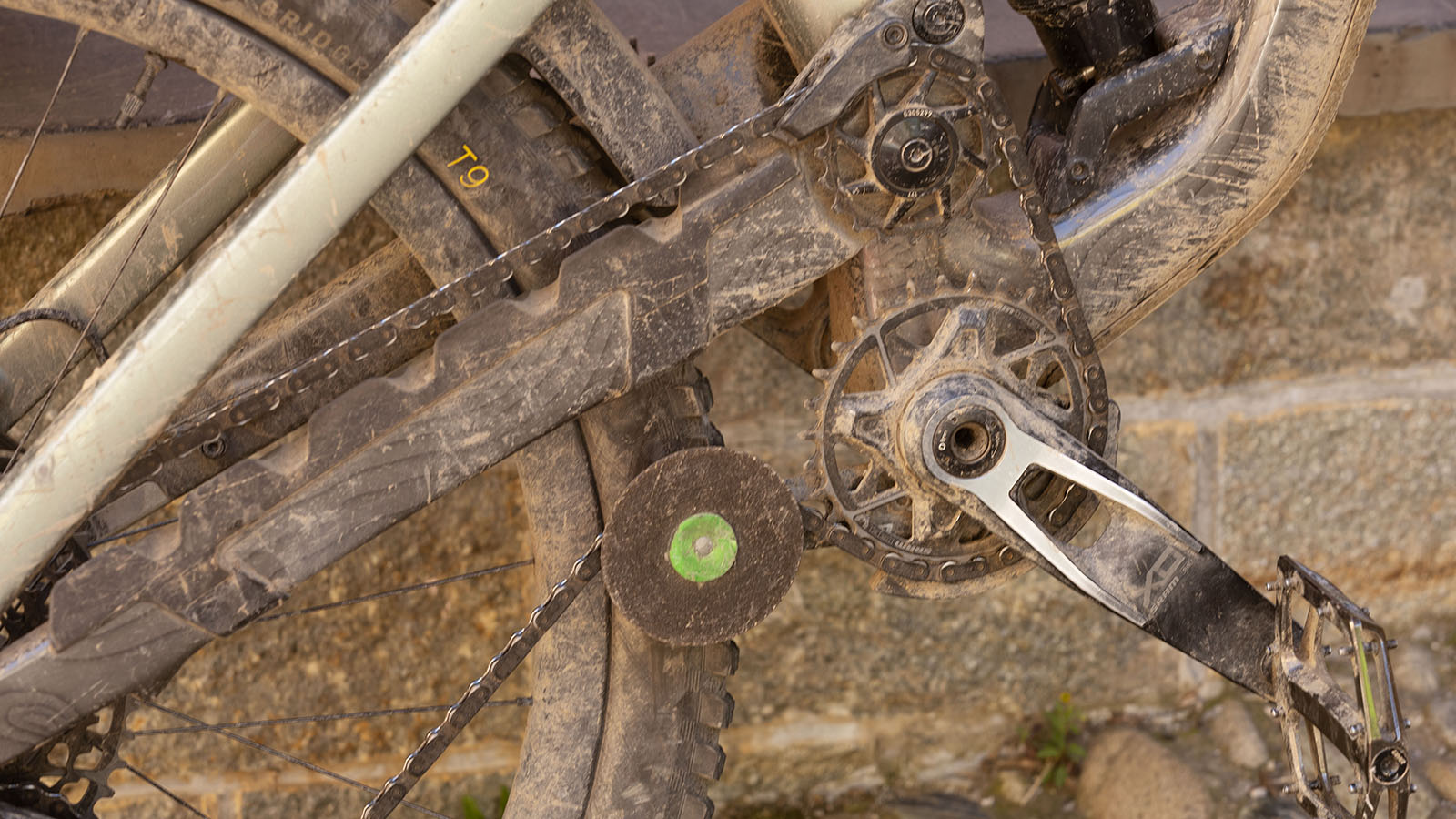
I had to use a homemade roller guide (made from a grinder disc!) while awaiting a replacement, and then had issues with the upper idler stuffing the chain between the jockey and frame. Trek has since made a rolling revision to lengthen the upper idler teeth for better chain stability, but my test bike didn’t have this update. All this faffing was a bit of pain, but didn’t actually stop me riding to be fair, and I’ve since logged thousands of meters descending on the replacement without problems and ended up kind of forgiving the Slash because it’s been so much fun.
Overall, I reckon the Slash offers the security of a big super enduro bike that can handle chunky terrain and is easy to ride fast and in control, while maintaining the sensory stimulation of a ‘regular’ 160mm-ish enduro bike. This much versatility is hard to find and will make the new Slash a solid option for many riders, not just those totally hell-bent on sending the descents.
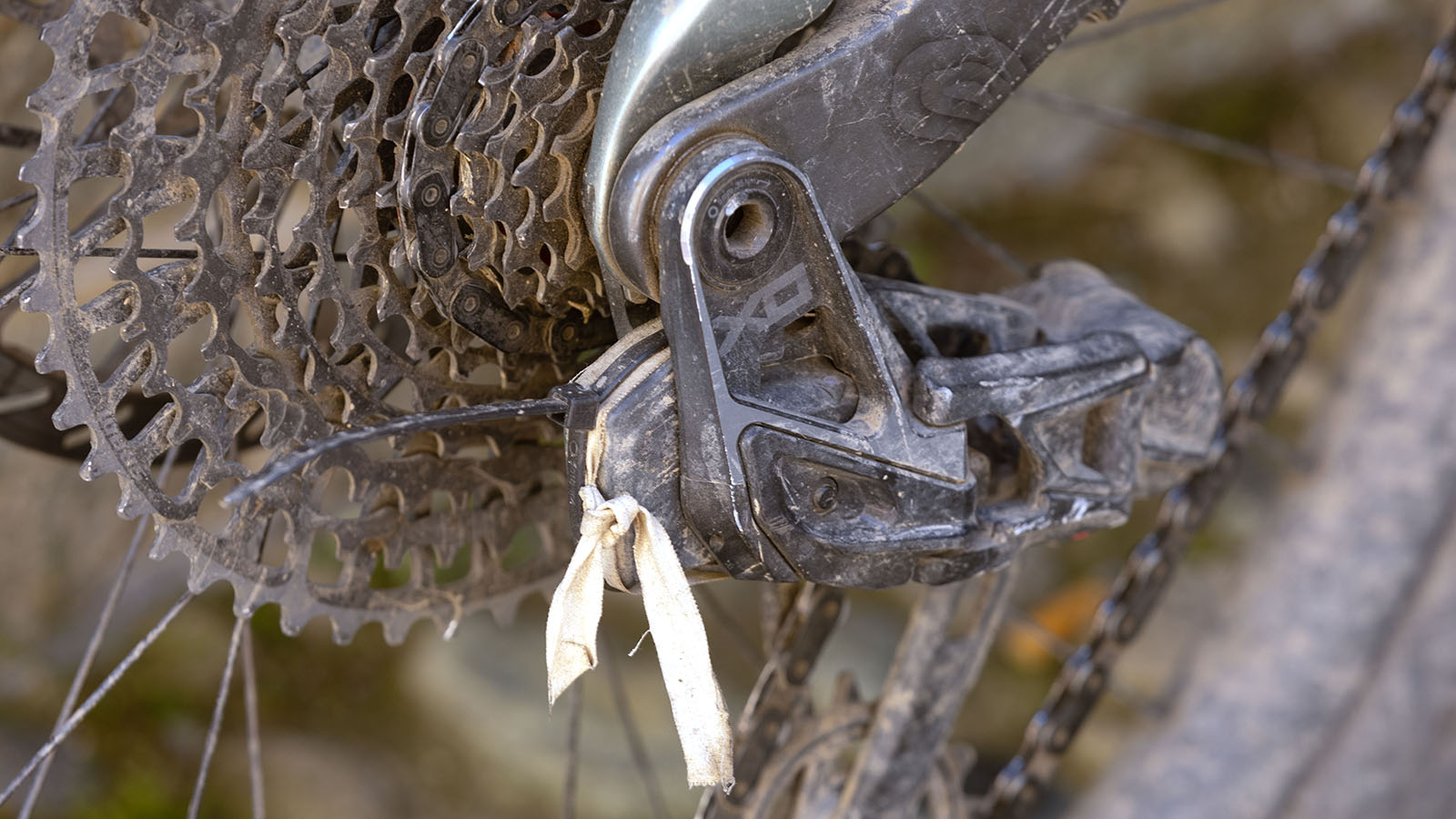
Verdict
More than just a bike for a downhiller who can’t justify having both a DH and enduro bike, Trek’s Slash 9.9 X0 AXS T-Type Gen 6 is a versatile and efficient all-rounder in its own right. The bike rips downhill and can rub out some serious chunk and the suspension offers continuous support to push into and out of for a really well-balanced rider feel front to rear.
A major highlight is how smooth the bike feels in terms of bump swallowing and vibration damping, without ever losing a sharper edge and enough reactiveness to push on and play harder. Pedaling zip and climbing prowess is decent too, especially for a bike carrying some extra weight due to a high pivot design and added drivetrain parts.
The added complexity of the idler and guide setup caused me some big headaches during testing though, and combined with some underperforming own-brand components, as much as I love the ride quality here, it’s difficult to 100 percent recommend this Slash 9.9 as offering ultimate performance and value.
| Attributes | Notes | Rating |
|---|---|---|
| Downhill performance | One of the best in the category | ★★★★★ |
| Climbing performance | As good as you can expect from a 170mm rig | ★★★★ |
| Components and build | A few rogue own-brand parts | ★★★★ |
| Value for money | A lot of cash to have some compromised parts on board | ★★★ |
Test conditions
- Conditions: Every kind of trail and every kind of weather
- Terrain: DH test tracks in San Remo in blazing heat to Bike Park Wales blues in rain via local hand cut enduro tracks and loam
- Temperature: Spring/summer UK weather – 10 to 24 degrees Celsius
Tech specs: Trek Slash 9.9 X0 AXS T-Type Gen 6
- Price: $9,399.00 / £9,400.00 / €9,999.00
- Discipline: Enduro
- Frame: Trek OCLV carbon HP w/internal storage
- Shock: RockShox Vivid Air Ultimate 170mm travel
- Fork: RockShox Zeb Ultimate Charger 3 170mm travel
- Wheels: Bontrager Line Pro 30 carbon w/Rapid Drive 108 hubs
- Tires: Bontrager Team Issue tires 29in x 2.5in front SE6 and 27.5 x 2.5in rear SE5 w/Core Strength sidewalls
- Drivetrain: SRAM XO Eagle Transmission, SRAM XO AXS POD Ultimate, T-Type DUB crank 165mm, XO Eagle rear mech and 10-52t cassette
- Brakes: SRAM Code SLR 4-piston w/ 200mm 6-bolt rotors F&R
- Seatpost: RockShox Reverb AXS 170mm dropper
- Saddle: Bontrager Arvada saddle
- Bars and stem: Bontrager RSL integrated bar stem w/35mm equivalent stem length and 820mm wide bar
- Weight: 16.2kg (35.7lb) M/L tested
- Sizes: M, M/L, L, XL
- Rider Height: 176cm
- Head angle: 63.3 degrees
- Seat angle: 73 degrees
- Effective seat angle: 77.4 degrees
- BB height: 350mm (MX setting)
- Chainstay: 434mm
- Front center: 821mm
- Wheelbase: 1,254mm
- Downtube: 745mm
- Seat tube: 420mm
- Top tube: 606mm
- Reach: 468mm

An ex-elite downhill racer, Mick's been mucking about and occasionally racing mountain bikes for over twenty years. Racing led to photo modelling and testing kit for magazines back in the day, and, nowadays, he's mostly riding enduro-style terrain on conventional and electric bikes. As curious as ever about products and tech, he's as likely to be on the other side of the lens or computer screen rating, reviewing and shooting all the latest gear. Mick's list of regular clients includes Bike Perfect, MBR, MBUK, and most of the leading UK MTB publications at one point or another.
